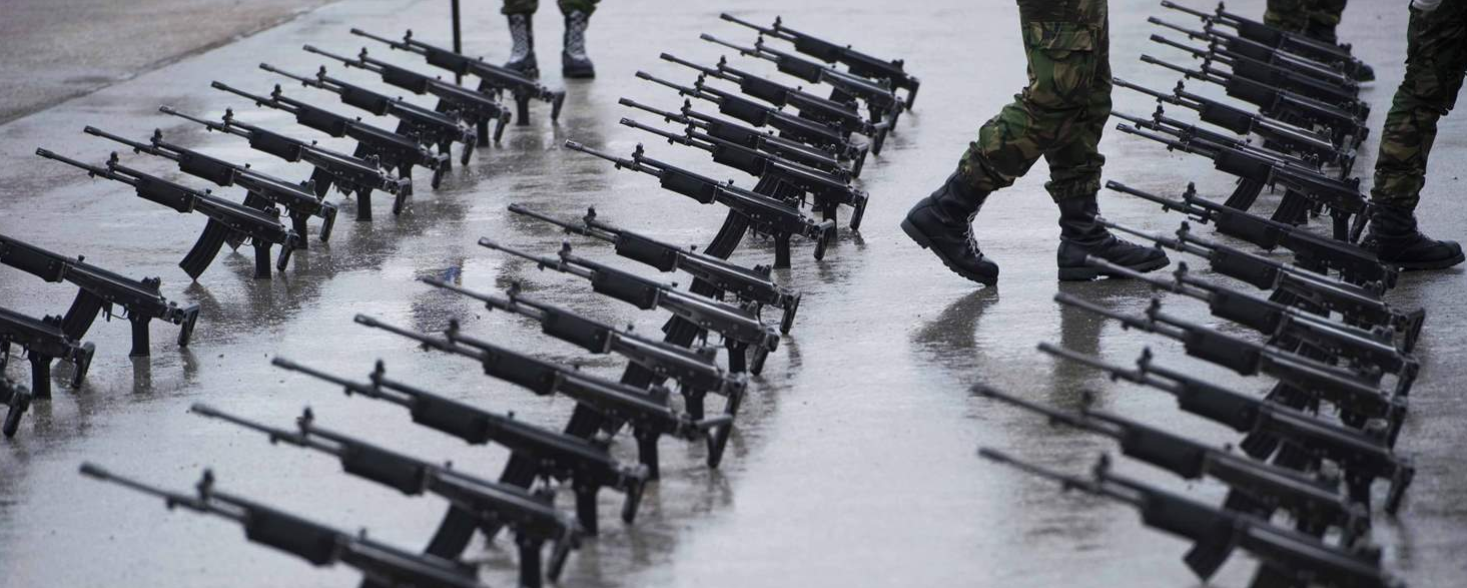Even though the Arms Trade Treaty has been in place for nearly five years, global arms trading is still on the rise. As world leaders meet in Geneva to discuss the treaty, we must remind them that there is still work to do.
After more than 20 years of campaigning by Amnesty International and partner NGOs in the Control Arms Coalition, the UN General Assembly voted decisively to adopt the Arms Trade Treaty (ATT) text in April 2013. The treaty entered into force on 24 December 2014.
The ATT is a global treaty that sets out, for the first time, prohibitions to stop the international transfer between states of weapons, munitions and related items when it is known they would be used to commit or facilitate genocide, crimes against humanity, or war crimes. Every year, an assessment is conducted to analyze the ‘overriding’ risk that potential arms exports could contribute to serious violations of international human rights and humanitarian law.
However, despite their commitment to regulating irresponsible arms trade, many key states parties continue to sell arms to governments that commit serious human rights abuses.
Here are some killer facts about the global arms trade, based on data collected by the Stockholm International Peace Research Institute (SIPRI), The Small Arms Survey, and Uppsala Conflict Data Program.
Global spending on arms
- SIPRI estimates that the total value of the global arms trade in 2017 was at least $95 billion.
- The top 100 arms companies made an estimated $398.2 billion worth of sales in 2017.
- US accounted for 36 per cent of world military spending in 2018
Global exports and imports of major conventional weapons
- The US is by far the world’s biggest exporter of arms. Between 2014-2018 Saudi Arabia was the main recipient, accounting for 22 per cent of US exports.
- The volume of international arms transfers has grown steadily since 2003, to reach its highest level since the end of the Cold War.
- The five largest arms exporters in 2014–18 were the US, Russia, France, Germany and China. Together these countries accounted for 75 per cent of global exports.
- The five largest arms importers in this period were Saudi Arabia, India, Egypt, Australia and Algeria. Together they accounted for 35 per cent of total arms imports.
The Top 5
In 2014-2018, these were the top clients of the top 5 exporters:
- US: Saudi Arabia (22% of total exports), Australia (7.7%), UAE (6.7%)
- Russia: India (27%), China (14%), Algeria (14%)
- France: Egypt (28%), India (9.8%) Saudi Arabia (7.4%)
- Germany: South Korea (19%) Greece (10%) Israel (8.3%)
- China: Pakistan (37%), Bangladesh (16%), Algeria (11%)
Transfers to the Middle East
- The flow of arms to the Middle East grew by 87 per cent between 2009–13 and 2014–18.
- More than half of US arms exports went to the Middle East in 2014–18.
- In 2014–18 59 per cent of British arms exports went to the Middle East. The vast bulk of this was deliveries of combat aircraft to Saudi Arabia and Oman.
Saudi Arabia-Yemen
- During 2014- 2018 Saudi Arabia became the world’s largest arms The US and UK are by far the largest suppliers.
- Saudi Arabian arms imports rose by 225 per cent between 2013-17
- Between 2014–18, more than 4000 armoured vehicles were delivered to Saudi Arabia from Austria, Canada, France, Georgia, South Africa and Turkey, and 338 tanks were delivered from the USA.
Small Arms and Light Weapons
- The Small Arms Survey estimates that there are more than one billion firearms in the world, the vast majority of which are in civilian hands.
- There are about 21 firearms for every 100 residents in the United States, 53 in Yemen, 39 in Montenegro and Serbia, and 35 in Canada and Uruguay.
- In 2017, Venezuela and El Salvador had the highest rates of violent deaths by firearm.
- The Small Arms Survey estimates that within a 50 year period, world production of military assault rifles, carbines, pistols, and light and heavy machine guns would range between 36 million and 46 million units.
The human cost
- 2,436,351 people have died in armed conflicts since 1989 – with over 77320 in 2018 – according to the Uppsala Conflict Data Program.
- 2017 saw a dramatic increase in the number of violent deaths worldwide, with approximately 589,000 people losing their lives violently. The heaviest burden of increased lethal armed violence affected South and Central America and the Caribbean.


